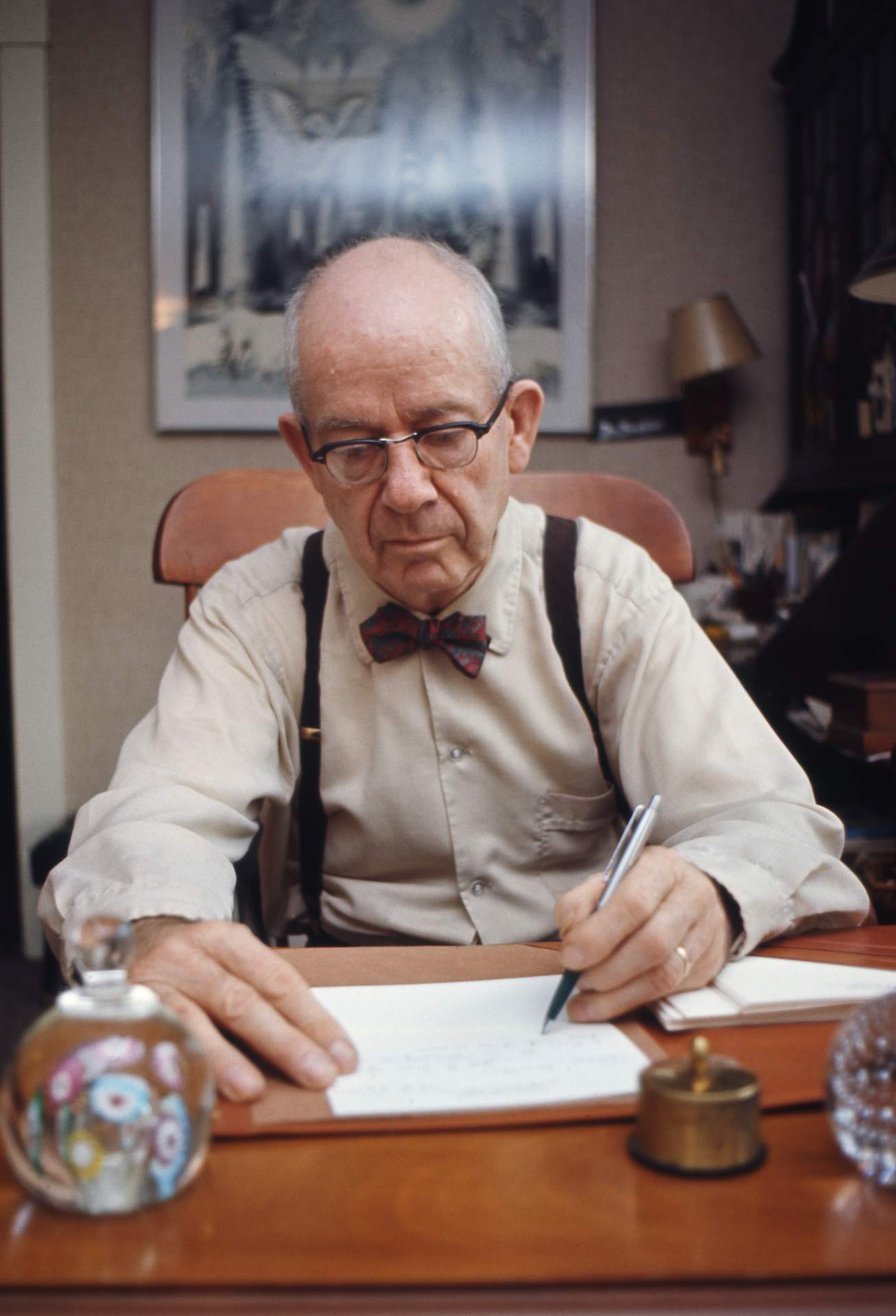
William M. Doran, Charles E. Burchfield Writing at his Desk, October 1966; Ektacolor slide, 35 mm; Charles E. Burchfield Archives, Gift of William M. Doran, 1966
Charles E. Burchfield: In His Own Words
Past
Nov 9, 2012 - Mar 31, 2013
From the age of seventeen until the end of his life, American watercolor painter Charles E. Burchfield wrote in journals that chronicled his artistic and intellectual development. Thanks to gifts from the Charles E. Burchfield Foundation and other donors, more than seventy volumes (over 10,000 handwritten pages) are housed in the Burchfield Penney Art Center’s Charles E. Burchfield Archives. These journals reveal much about his unique vision, love of nature and gift for writing. Many things have been learned from them over the past forty years. Yet Burchfield’s passion for writing could not be contained in the journals alone.
The exhibition In His Own Words focuses on lesser known parts of the artist’s textual record and presents them with related works from the museum’s permanent collection. Throughout his career, Burchfield’s moods, ideas and personal critiques were recorded on thousands of scraps of paper and studies for paintings. Collectively, they form a major part of the Charles E. Burchfield Foundation Archives. This special collection of over 25, 000 objects from the artist’s Gardenville Studio is housed in the museum’s Archives today.
Most of the objects selected for this exhibition were created between the years 1918 and 1945, a period bookended by the two World Wars. Early works include three camouflage designs made during Burchfield’s time in the Army at Camp Jackson in South Carolina. He was sent there after being drafted in June of 1918. By December, the war was over, and he was again free to pursue his painting career.
Works from the 1920s feature false front buildings. These works suggest nostalgia for the changing face of rural America. An untitled painting of a horse and carriage approaching a small town is on view here to the public for the first time. With the 1930s came the Great Depression and a sobriety in Burchfield’s art. Many paintings from this period depict once great industries as they slowly begin to crumble. The mood of these paintings is described in studies and notes related to the pictures. A note for Grain Elevators (1932-38) reminds the artist to “Paint in oils - great [somber] skies... boldly conventionalize into emotional masses.”
Other paintings where done over a number of years. He began painting Solitude (1918 (1945-63)) during the First World War. This masterwork was expanded during the Second World War and later completed in the 1960s. A handwritten description which accompanies the painting describes the development of the work and lists the real landscapes in Gowanda, Letchworth State Park and elswhere that inspired it.
Notes that Burchfield wrote to himself are also included in the exhibition. These personal critiques can be quite severe at times. In some, he reprimands himself: “You have become soft and complacent.” In others, his words are more chastising: “You are completely dead – devoid of any emotional attitude toward nature / Wake up – be bold, make bold caricatures & conventionalizations.” These statements do not refer to any particular works of art. Instead they speak to the man. They tell us a great deal about the artist’s character and how he saw himself fitting into the world.
This exhibition is an attempt to let Burchfield speak for himself. His was a complex and layered visual language that points to a complex human being. Like so many artists, Burchfield was one of his most important critics. The inner triumphs, struggles and ambitions of his career are reflected in artwork and writing. They also contain traces of larger sentiments felt by the country during the first half of the 20th century.
Tullis Johnson
Archives & Information Resource Manager
Burchfield Penney Art Center